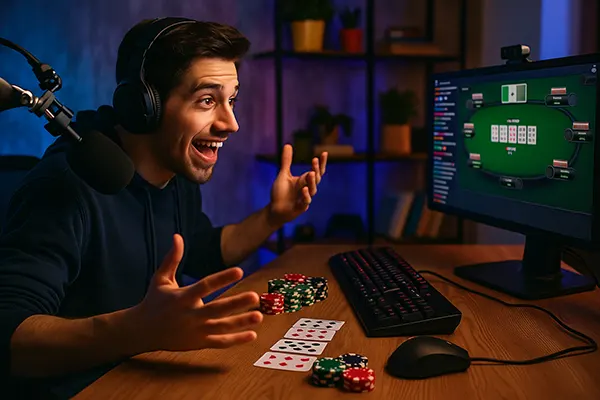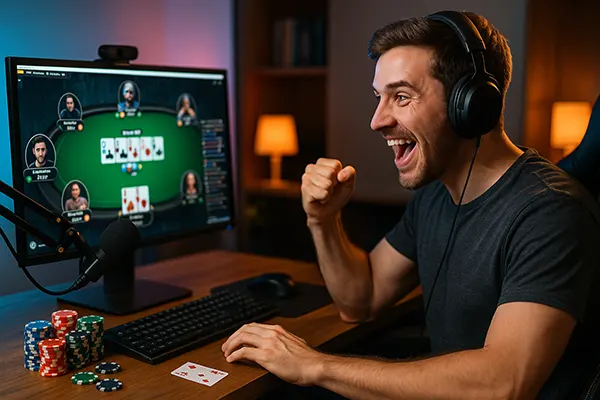
How Twitch Transformed the Careers of Poker Players: Streamers Who Became Stars
Online poker has seen tremendous evolution in the past decade, but perhaps no platform has reshaped the careers of players quite like Twitch. The live-streaming service has given poker pros and enthusiasts a way to broadcast their sessions, share insights, and build communities. As a result, some streamers have turned into genuine stars—both within the poker ecosystem and beyond. This article explores how Twitch catalysed these transformations and what it means for poker in 2025.
The rise of poker on Twitch
Since its integration of poker content around 2015, Twitch has served as a gateway for casual viewers to dive into the strategic depth and psychological warfare of the game. At first, only a few professionals streamed their sessions, primarily as a novelty. However, over the years, Twitch evolved into a legitimate platform for showcasing poker talents.
This shift coincided with the growing appetite for real-time, unscripted content. Audiences wanted to see unfiltered decisions, bluffs, and breakdowns. Viewers not only learned strategy but also connected with the personalities behind the screen. The format created a dynamic that traditional televised poker struggled to deliver—genuine interactivity.
With millions tuning in monthly, Twitch became a central hub for poker content. Not only did it increase engagement among seasoned players, but it also served as an educational tool for new ones. The accessibility of the medium significantly reduced the intimidation barrier often associated with learning poker.
How the Twitch audience changed the game
The Twitch audience, composed mostly of digitally savvy and younger viewers, changed how poker was consumed. Streamers had to adapt their style—explaining their logic, narrating thought processes, and interacting with live chat. This required a skill set beyond poker mastery; charisma and communication became equally essential.
Through subscriptions, donations, and sponsorships, many streamers built stable revenue models. This allowed them to focus full-time on poker, even if they weren’t raking in massive tournament wins. It also encouraged transparency and accountability, as the audience could instantly react to decisions and results.
The audience interaction created unique relationships between players and fans. Trust and relatability became key, establishing streamers as community leaders rather than untouchable professionals. In many ways, Twitch humanised poker, making it more inclusive and emotionally engaging.
Success stories of Twitch poker streamers
Lex Veldhuis is perhaps the most iconic example of a poker player who capitalised on Twitch’s potential. A professional with years of experience, Veldhuis transitioned to streaming and built one of the largest poker communities on the platform. His blend of high-level play and energetic commentary attracted tens of thousands of regular viewers.
Another standout case is Ben “Spraggy” Spragg, whose humorous, self-deprecating tone resonated with a wide demographic. By streaming both cash games and tournaments, he showcased the full range of poker, helping newer players understand nuances while entertaining veterans. His collaborations with other streamers further boosted his visibility.
Other names, such as Parker Talbot (“tonkaaaaP”) and Arlie Shaban, also gained immense popularity. These players not only boosted their bankrolls through Twitch partnerships but also received invitations to global poker events and became brand ambassadors. Twitch, in essence, provided a launching pad for long-term career development.
From grind to brand: poker’s evolution through Twitch
Before Twitch, a poker player’s image was often tied to their winnings or televised presence. Now, branding is multifaceted. Personality, consistency, and community involvement matter just as much as tournament results. Twitch has turned players into influencers, entrepreneurs, and educators.
Many streamers now launch their own merchandise, YouTube channels, and strategy courses. They host meetups, partner with training platforms, and even run charity streams. Poker is no longer just a game; it’s a content ecosystem supported by loyal communities.
This transformation has made the poker lifestyle more sustainable. Instead of chasing unstable tournament scores, players can rely on diversified income while cultivating their personal brands. In turn, this stability has attracted new talent, eager to blend gaming and streaming into viable careers.

The state of Twitch poker in 2025
As of February 2025, Twitch poker remains strong, though the landscape has matured. Major poker platforms like PokerStars and GGPoker now have official partnerships with streamers. Regular events like “Twitch Poker Week” feature promotions, bounties, and exclusive online tournaments designed for the streaming audience.
Viewer habits have also evolved. While long-form streams are still popular, highlights, recaps, and interactive Q&A sessions have gained traction. Streamers often combine platforms—Twitch for live interaction, YouTube for archives, and Discord for community management.
AI tools now assist streamers with real-time analytics and even captioning. Newcomers can enter with lower setup costs and still appear professional. However, competition is higher, meaning uniqueness and consistency remain vital. The poker Twitch scene has professionalised, yet remains accessible to passionate individuals.
What aspiring poker streamers should know
For anyone considering a poker streaming career in 2025, the blueprint is clear but demanding. Success requires more than playing well. It involves storytelling, technical know-how, and building trust over time. Fortunately, tools and communities exist to support aspiring streamers at every level.
Beginners are advised to start with lower-stakes games, provide authentic commentary, and maintain a regular schedule. Networking with other creators and responding to feedback can accelerate growth. Authenticity beats performance—audiences favour honesty over theatrics.
In this landscape, patience pays off. Twitch poker isn’t just a trend—it’s a career path that merges passion with profession. For many, it’s no longer about going all-in at the table, but about investing in the journey with their viewers beside them.






